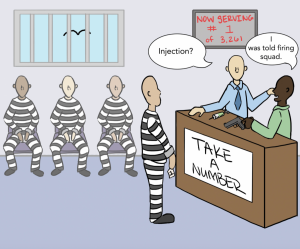While avoiding starting my homework, I was watching clips on YouTube from different TLC TV-shows. I quickly fell down the rabbit hole of watching clips from the Untold Stories of the ER and one particular video title stood out to me: “Girl with ‘Walking Corpse Syndrome’ Thinks She’s Dead!”
https://www.youtube.com/watch?v=_zME-HR8MZA
Intrigued, I clicked on it. Although poorly acted, the case presented was very interesting. It was about a young woman who believed she was dead and consequently refused to eat. She had Cotard’s Syndrome: a mental illness in which a person believes that they are dead, decaying, non-existent, or have lost internal organs or blood.
It was first described in 1880 by neurologist Jules Cotard who was presented with a patient known as Mademoiselle X who did not believe certain parts of her body existed. She believed she did not need to eat and explained that she was condemned to eternal damnation. She died of starvation, which unfortunately is a common consequence of the illness due to patients believing they do not need to eat. Cotard’s is described in the Diagnostic and Statistical Manual of Mental Disorders (5th Edition) as a type of somatic delusion that involves bodily functions or sensations. Although not outlined in detail in the DSM, an individual is more likely to be afflicted with the disorder if they have schizophrenia or experience psychosis, neurological illness, another mental illness such as depression, brain tumors, or migraine headache.
The syndrome normally exists in three distinct stages. The first is the germination stage, in which depressive and hypochondria symptoms appear. The second stage is called the blooming stage, in which delusions of negation start appearing. The last stage is the chronic stage, in which the patient suffers prolonged severe delusions and chronic psychiatric depression. All three stages severely impact the patient’s ability to care for themselves, leading them to neglect their physical health and personal hygiene.
The syndrome can have severe impacts on a person’s interactions with the world; their negation of self often comes with a distorted view of the external world. For example, a patient described in the article “Betwixt Life and Death: Case Studies of the Cotard Delusion” was hospitalized in 1990 because he believed that he was dead. His mother took him to another country after he had been discharged. He believed that he was being taken to hell. He had lost touch of where he was in the world and he interpreted external sensory output differently. The weather which was hotter in the country they were visiting was seen as a reason to confirm that he was in hell. Because of the extremity and rarity of Cotard’s Syndrome, it is often hard to diagnosis and therefore treat, so the patient often suffers with the symptoms for an extended period of time.





